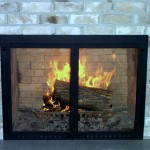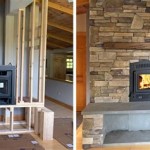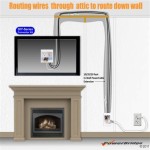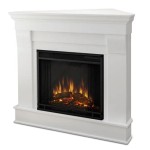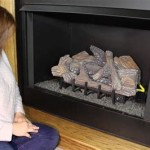Aurora Fireplace Insert Manual: A Comprehensive Guide
The Aurora fireplace insert is a popular choice for homeowners seeking to improve the efficiency and aesthetics of their existing fireplaces. These inserts are designed to fit into an existing fireplace opening, effectively transforming an inefficient, open-hearth fireplace into a powerful heating source. A comprehensive understanding of the Aurora Fireplace Insert Manual is crucial for safe and effective operation, proper maintenance, and maximizing the lifespan of the appliance. This document serves as the primary resource for all aspects of the insert, providing detailed instructions and safety guidelines.
The manual typically includes sections on installation, operation, maintenance, troubleshooting, and safety precautions. It is imperative that homeowners read and understand the entire manual before attempting to install or operate the Aurora fireplace insert. Failure to do so could result in damage to the unit, property damage, or even personal injury. The specific content of the manual may vary depending on the model of the Aurora fireplace insert, so it is essential to refer to the manual that corresponds directly to the specific unit being used.
Understanding the Installation Process
Proper installation is paramount to the safe and efficient operation of any fireplace insert. The Aurora Fireplace Insert Manual provides detailed instructions on the installation process, covering all necessary steps from preparing the fireplace opening to connecting the venting system. This section typically includes diagrams and illustrations to aid in understanding the procedures.
One of the most important aspects of installation is ensuring proper chimney venting. The manual will specify the correct venting requirements for the model, including the type and size of venting pipe required. This is crucial for preventing dangerous carbon monoxide build-up in the home. Often, a stainless steel liner is required to extend the full length of the chimney to ensure proper draft and to protect the existing chimney structure from corrosion caused by combustion byproducts.
The manual will also outline the necessary clearances to combustible materials. Fireplace inserts generate a significant amount of heat, and it is vital to maintain adequate space between the insert and any flammable materials such as walls, mantels, and furniture. Failure to adhere to these clearance requirements can result in a fire hazard. The manual will provide specific measurements for these clearances, often accompanied by diagrams to illustrate the correct positioning of the insert within the fireplace opening.
Furthermore, the manual may detail the electrical requirements of the insert, if applicable. Some models require an electrical connection for features such as blowers, fans, or electronic controls. The manual will specify the voltage and amperage requirements, as well as the proper wiring procedures. It is critical to ensure that the electrical connection is performed by a qualified electrician to prevent electrical hazards.
The installation instructions typically include a checklist of items to verify before the insert is used for the first time. This checklist may include verifying the integrity of the venting system, confirming proper clearances to combustibles, and ensuring that all connections are secure and properly tightened. This final verification step helps to ensure that the insert is installed correctly and is safe to operate.
Operational Guidelines and Safety Precautions
Once the Aurora Fireplace Insert is properly installed, understanding the operational guidelines is crucial for safe and efficient use. The manual provides detailed instructions on how to operate the insert, including how to start a fire, control the burn rate, and properly extinguish the fire.
The manual will typically explain the proper types of fuel to use in the insert. Using the wrong type of fuel can damage the unit, reduce its efficiency, and even create a safety hazard. For example, burning treated wood or wood that is not properly seasoned can lead to excessive creosote build-up in the chimney, increasing the risk of a chimney fire. The manual will specify the recommended type of wood, as well as guidelines for proper seasoning and storage.
Controlling the burn rate is also an important aspect of operation. The manual will explain how to adjust the air intake to control the amount of oxygen that feeds the fire. Reducing the air intake can slow the burn rate and extend the burn time, while increasing the air intake can accelerate the burn rate and increase the heat output. Understanding how to properly control the burn rate is essential for maximizing efficiency and maintaining a comfortable temperature in the home.
Safety precautions are a paramount concern, and the manual dedicates a significant portion to addressing potential hazards and providing guidance on how to prevent them. This section typically includes warnings about the risks of carbon monoxide poisoning, chimney fires, and burns. It will also provide instructions on how to install and maintain carbon monoxide detectors, as well as how to recognize the symptoms of carbon monoxide poisoning.
The manual will also emphasize the importance of keeping combustible materials away from the insert, even those that are compliant with the minimum clearance requirements. Sparks or embers can sometimes escape from the insert, and it is important to take precautions to prevent them from igniting nearby materials. The manual may recommend using a fire screen or hearth pad to provide additional protection.
Furthermore, the manual may include guidelines on how to properly dispose of ashes. Hot ashes can remain hot for several days, and it is important to handle them carefully to prevent fires. The manual will recommend using a metal container with a tight-fitting lid to store ashes, and will advise against disposing of ashes in a combustible container or near flammable materials.
Maintenance and Troubleshooting
Regular maintenance is essential for ensuring the long-term performance and safety of the Aurora Fireplace Insert. The manual provides detailed instructions on how to properly maintain the insert, including cleaning the firebox, inspecting the venting system, and performing routine checks for wear and tear.
Cleaning the firebox is a crucial maintenance task. Over time, ash and creosote can accumulate in the firebox, reducing the efficiency of the insert and increasing the risk of a chimney fire. The manual will explain how to properly clean the firebox, including how to remove ash and creosote deposits. It will also recommend the frequency with which the firebox should be cleaned, which may vary depending on usage and the type of fuel being burned.
Inspecting the venting system is another important aspect of maintenance. The manual will explain how to inspect the chimney for signs of damage, such as cracks or corrosion. It will also recommend having the chimney professionally inspected and cleaned on a regular basis, especially if using the insert frequently. Regular chimney cleaning can remove creosote build-up and prevent chimney fires.
The manual may also provide instructions on how to inspect and maintain other components of the insert, such as the door seal, glass panel, and blower (if applicable). A damaged door seal can allow air to leak into the firebox, reducing the efficiency of the insert. A dirty glass panel can obscure the view of the fire. A malfunctioning blower can reduce the effectiveness of the insert's heating capabilities. The manual will provide guidance on how to properly maintain these components to ensure optimal performance.
In addition to maintenance instructions, the manual typically includes a troubleshooting section that addresses common problems that may occur during operation. This section may include solutions for issues such as difficulty starting a fire, poor draft, excessive smoke, and reduced heat output. The troubleshooting section can help homeowners identify and resolve minor problems without the need to call a professional technician.
However, it is important to remember that some repairs should only be performed by a qualified technician. The manual will typically advise against attempting to repair any components that are beyond the scope of basic maintenance. Attempting to repair complex components without the proper knowledge and tools can be dangerous and may void the warranty.
Aurora Stove Model Identification Hearth Com Forums Home
Aurora Stove Model Identification Hearth Com Forums Home
Aurora Stove Model Identification Hearth Com Forums Home

Scandia Sg010400165 Aurora 36 Inch Electric Fireplace Installation Guide

Scandia Sg010400165 Aurora Electric Fire Installation Guide

Scandia Sg010400165 Aurora 36 Inch Electric Fireplace Installation Guide

Marquis Aurora Zero Clearance Outdoor Gas Fireplace Hearth Appliances
Aurora Wood Stove Info Wanted Hearth Com Forums Home
Aurora Stove Model Identification Hearth Com Forums Home

Ardent Energy Aurora Owner S Manual Manualzz
Related Posts

